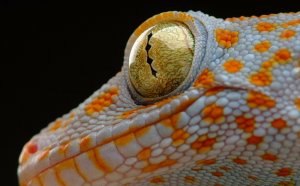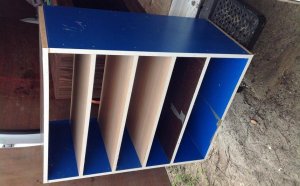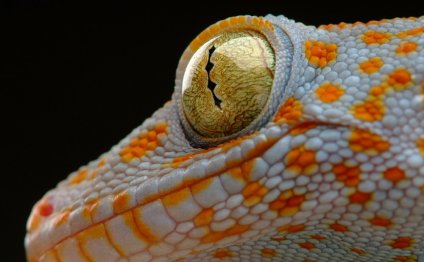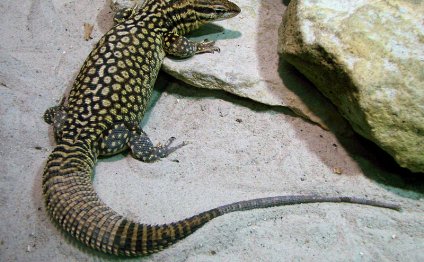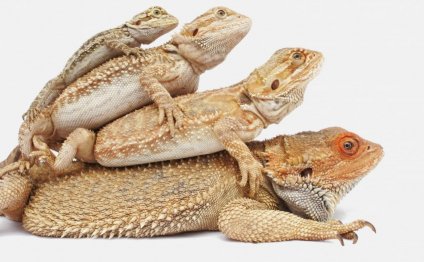
Most popular reptile pets
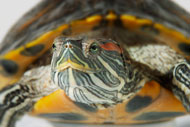
Red-Eared Slider (Trachemys scripta elegans)
Red-Eared Slider
Adult Size: 8 to 10 inches. Females are slightly larger than males.
Range: Now established throughout the United States. The turtle is even found in many places in Asia and Europe. This turtle is native to the Mississippi River drainages and found from Louisiana north to Illinois. It extends into Alabama, and also can be found throughout Texas and the Pecos River of New Mexico.
Habitat: A habitat generalist. This adaptable turtle can be seen in permanent ponds, flood-plain swamps and slow-moving rivers.
Captive Care: Easily maintained as long as the turtles have a large aquarium. A 60-gallon tank could house two adult turtles. At least one basking site is required, and it must be easy for turtles to climb onto. A basking light should provide a hotspot at least 80 degrees Fahrenheit. Full-spectrum lighting is also mandatory. Water temperature should be around 75 degrees, and a water filter can be used to maintain water quality. Even so, regular water changes will be necessary.
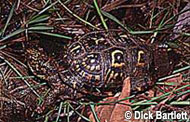 Diet: Omnivorous. These turtles eat aquatic plants, turtle pellets and animal matter. Juveniles are more carnivorous, but as they mature they consume more plant material.
Diet: Omnivorous. These turtles eat aquatic plants, turtle pellets and animal matter. Juveniles are more carnivorous, but as they mature they consume more plant material.
Eastern Box Turtle (Terrapene carolina carolina)
Eastern Box Turtle
Adult Size: 4 to 8 inches.
Range: Found throughout most of the United States east of the Rocky Mountains. The turtle is also found in Mexico.
Habitat: Near streams and ponds in grasslands, woodlands and marshes.
Captive Care: This mostly terrestrial turtle requires an enclosure offering at least 4 square feet per adult. A shallow water pan can be included in the enclosure, but the water must be changed daily, and the pan must be cleaned. If kept outside, box turtles need a place to get out of the sun, preferably a few hides in which they can easily turn around and also loose leaf litter in which to burrow. Provide a basking spot that reaches 85 to 88 degrees. Many keepers recommend an ambient temperature of 75 to 80 degrees, but some have suggested as low as 70 because these turtles are very active after it rains and are often found in the shade. A higher humidity is preferred. If turtles are kept indoors, full-spectrum ultraviolet lighting is required.
Diet: Omnivorous. Box turtles accept a variety of insects, slugs, earthworms, vegetables, grasses and fruits. These turtles also accept commercial diets available in pet stores.
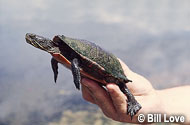 Western Painted Turtle (Chrysemys picta bellii)
Western Painted Turtle (Chrysemys picta bellii)
The Western Painted Turtle
Adult Size: 7 to 8 inches.
Range: Found in the United States and Canada. This turtle can be found from Oklahoma north to the Dakotas and even as far as Saskatchewan, east to upper Michigan and Ontario, and west to Washington and British Columbia. The turtle can also be found to the south in New Mexico’s Rio Grande.
Habitat: This adaptable turtle occurs in prairie wetlands, river flood plains and river oxbows.
Captive Care: Outside, a 50- to 150-gallon pond is ideal. Inside, the smallest tank recommended for one turtle is 20 gallons. These turtles bask and need a platform of some sort, such as a log, rock or turtle basking platform available in pet stores. A good water filter helps with water quality. If kept inside, the turtles require a basking light providing ultraviolet rays and also a heating lamp that keeps a hotspot around 90 degrees. The water temperature should be around 70 degrees.
Diet: Omnivorous. Western painted turtles eat aquatic plants, aquatic insect larvae, crickets, earthworms and chopped fish. The turtles also accept commercial diets available from the pet store.
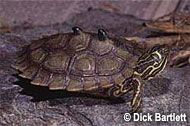 Map Turtle (Graptemys geographica)
Map Turtle (Graptemys geographica)
Map Turtle
Adult Size: Females measure 6 to 10 inches. Males are half this size.
Range: Northeastern United States and into Canada. This turtle is found in the Great Lakes region.
Habitat: Moving waters, such as rivers and large streams.
Captive Care: These turtles can be demanding because they need higher water quality. They can be prone to bacterial shell rot. One or two small map turtles can live in a 40-gallon tank, but like with any captive turtle, more space is better. If you live in warmer climates, map turtles can be kept outside year round. Inside or out, basking sites are essential. If turtles are kept indoors, an ultraviolet lamp is a must, and so is a heat lamp that provides a temperature between 84 and 94 degrees. Water temperatures should be between 72 and 80 degrees.
Diet: Hatchling turtles eat duckweed and other aquatic plants, but adults are primarily carnivorous. Insects and worms are eagerly consumed. The turtles also accept commercial diets available from the pet store. Give these turtles a calcium and vitamin D3 supplement in addition to full-spectrum lighting to promote good shell and bone health.
Wood Turtle (Glyptemys [Clemmys] insculpta)
Wood Turtle
Adult Size: 5 to 9 inches.
Range: Northeastern United States and into Canada.
Habitat: Found in or near rivers, streams and lakes. Laws protect these turtles from collection over almost all of their range.
Captive Care: These turtles should have a water area 2 feet deep and an enclosure 5 feet long and 5 feet wide. Make sure the turtles have a place to easily haul out of the water and bask under a heat lamp and a light providing ultraviolet light, including UVB. Substrate for a land area can be topsoil, sand or a mixture. Provide an ambient temperature between 70 and 80 degrees, a basking spot of 85 degrees, and a water temperature between 60 and 70 degrees.
Diet: Omnivorous. Wood turtles accept aquatic plants, earthworms, mealworms, crickets and crayfish. The turtles also accept commercial diets available from the pet store.
Want to read the full story? Pick up the February 2010 issue of REPTILES, or subscribe to get 12 months of articles just like this.
RELATED VIDEO
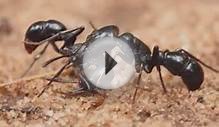
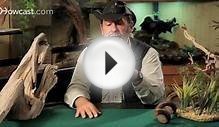
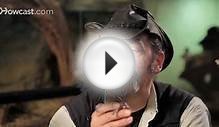
Share this Post
Related posts
Colorful lizard
A very large species of chameleon that is endemic to forests in eastern and northern Madagascar. They reach up to 68 cm (27…
Read MoreFun reptile pets
B.T.J.’s Jungle of West Islip, New York – your one-stop pet shop – offers a fantastic mixture of reptiles. Some of our featured…
Read More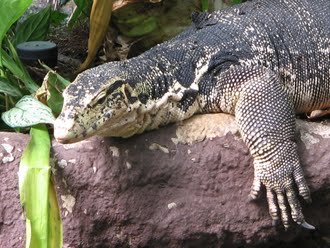 The Water monitor, (Varanus salvator) is a large species of monitor lizard capable of growing to 3.21 metres (10.5 ft) in length, with the average size of most adults at 1.5 metres (4.9 ft) long. Maximum weight of Varanus salvator can be over 25 kilograms (55 lb)...
The Water monitor, (Varanus salvator) is a large species of monitor lizard capable of growing to 3.21 metres (10.5 ft) in length, with the average size of most adults at 1.5 metres (4.9 ft) long. Maximum weight of Varanus salvator can be over 25 kilograms (55 lb)...
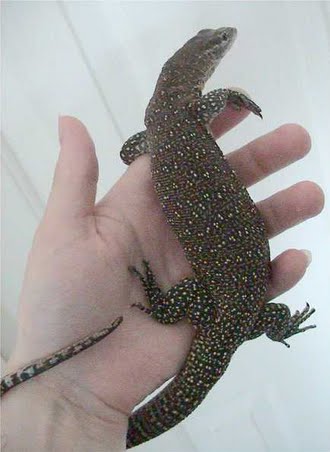 The Timor Monitor or Spotted Tree Monitor (Varanus timorensis) is a species of small monitor lizard native to the island of west and east Timor.
The Timor Monitor or Spotted Tree Monitor (Varanus timorensis) is a species of small monitor lizard native to the island of west and east Timor.